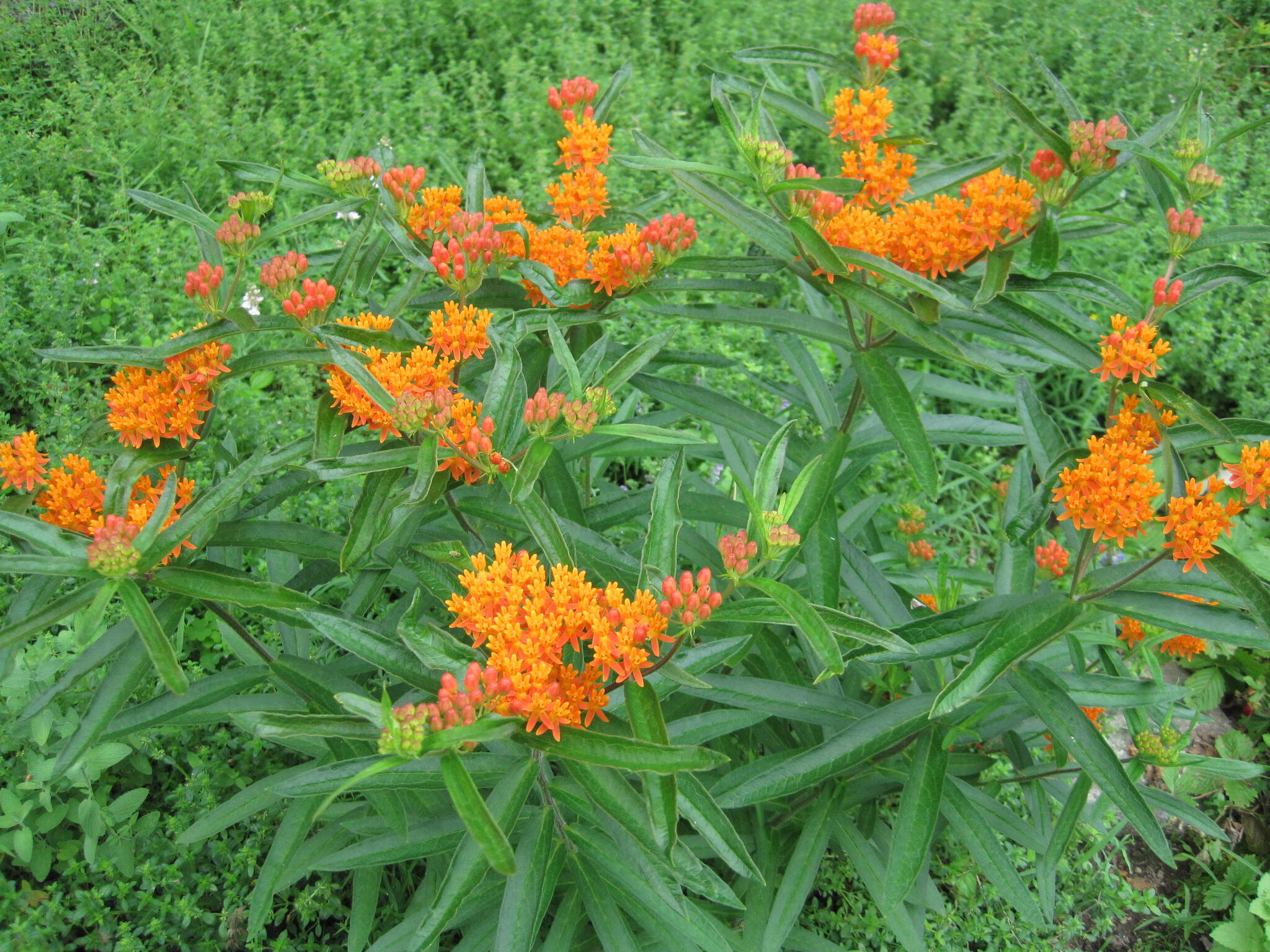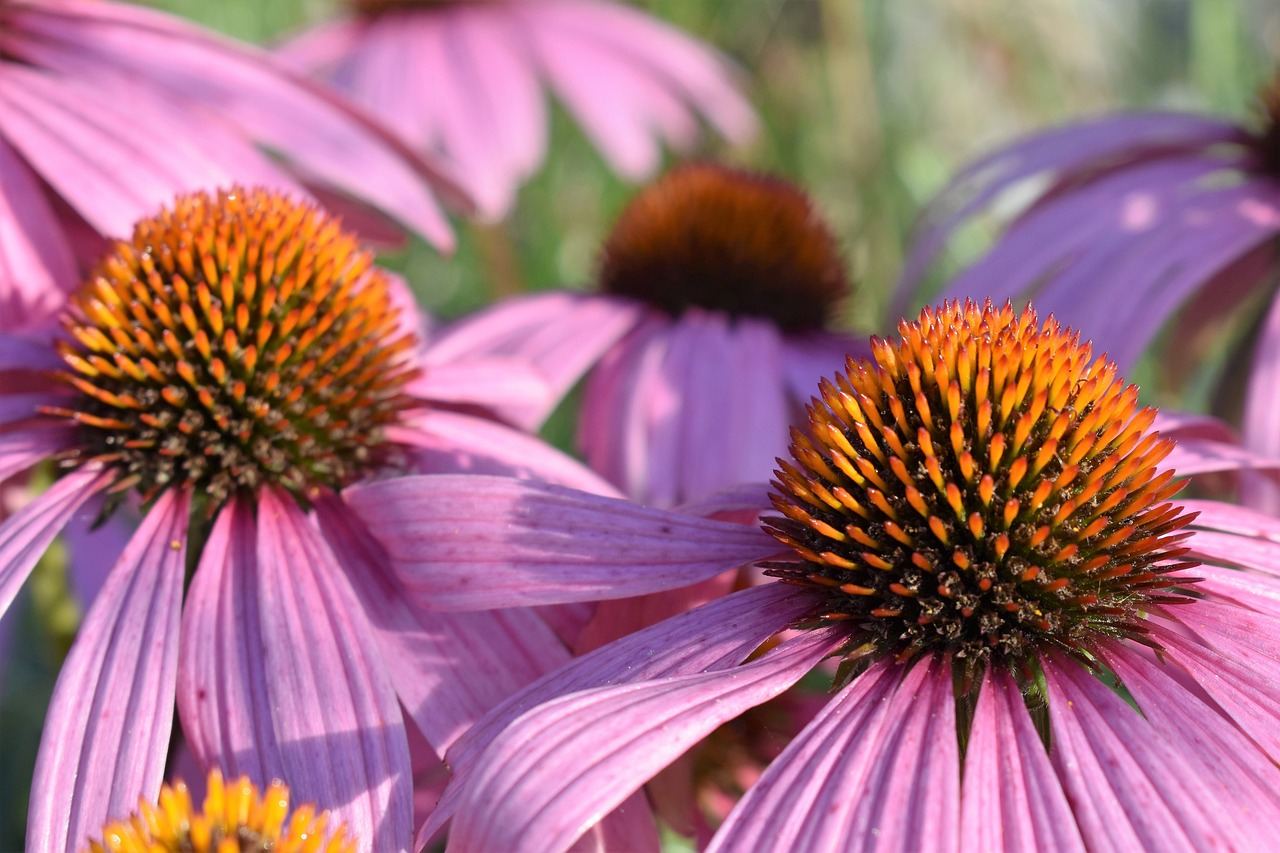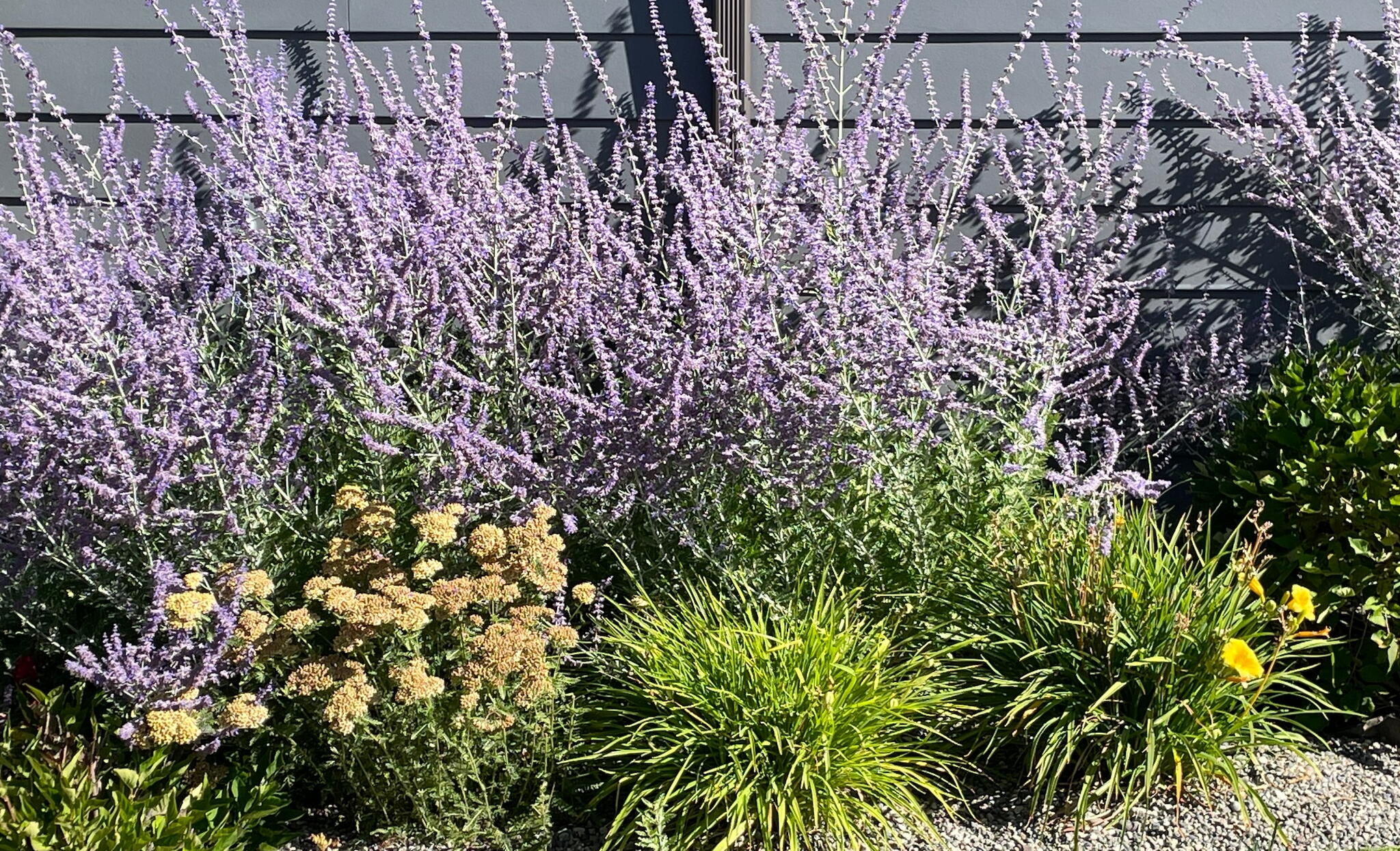
A roundup of the best perennials for a sunny spot
If you are blessed with a garden that gets full sun, rejoice! Your place is perfect for perennial flowers that thrive in sunny spots. I’ve narrowed my list down to 20 favorites, with an eye toward American natives, which are perfect for supporting pollinators. Take a look and tell me what you think.
What is a “Full Sun Perennial”?
Let’s start with the definition of “perennials.” Unlike annual flowers, which last 1 season, perennial plants return year after year. Technically, they must live at least 2 years, but most last many more.
Perennials are the mainstay of the garden. Annuals are used to add a pop of color or for seasonal containers. Learn more about annual versus perennial plants.
Read Next
So, what exactly is meant by “full sun”? Test your site by keeping track of how much sunlight your garden gets from May to July.
- Six or more hours of direct sunshine between 10 a.m. and 6 p.m. is considered full sun.
Of course, other important factors to consider when choosing plants include soil moisture and space.
- Don’t put a plant that abhors wet feet in a naturally boggy spot.
- When setting out the plants, keep in mind their mature size so they will have room to reach their full potential.It is tempting to plant too closely when the plants are young.
- Consider how the garden will be viewed—from just one side or all around—so you can plan where the tallest plants should go.
- Bear in mind that you don’t have to plant your sunny garden all at once. Add plants over the years as time and budget allow, filling in bare places with annuals that can supply season-long color while the perennials grow.
20 Perennials for Full Sun
1. Black-eyed Susans (Rudbeckia hirta)
Midwest natives, these flowers now grow wild wherever they have naturalized. Easy to grow in well-draining soil, they form upright, 2–3 feet-tall, hairy-leaved clumps that spread 1 to 2 feet wide. All summer long, their 2–3-inch-wide, daisy-like yellow flowers with brown centers will bob and sway on tall stems. They are short-lived perennials but are known to self-seed freely, so you may find them popping up in unexpected places! If you want a reliable perennial cultivar that stays where you plant it, try R. fulgida ‘Goldsturm’. Named Perennial Plant of the Year in 1999, it has larger flowers, 3-4 inches across, and doesn’t mind moister soil. For more info, look at our Black-eyed Susans planting guide.
- Hardy in Zones 3–9
- Space 2 feet apart
- Blooms June-Sept
- Yellow flowers

2. Blanket Flower (Gaillardia aristata)
An easy-to-grow prairie native, this perennial tolerates dry conditions. All America Selections (AAS) winner ‘Arizona Sun’ forms a mounded, compact plant 8–10 inches tall, great in the garden or in a container. It has 3-inch-wide, mahogany-red petals tipped with yellow. Readily grown from seed, it will blossom in its first year, drawing bees and butterflies to your garden. Keep them deadheaded to prolong the bloom time.
- Zones 3–8
- Space 10–12 inches apart
- Blooms June–Sept
- Bicolor red and yellow flowers

3. Blazing Star (Liatris spicata)
Native to moist meadows, Blazing Star prefers fertile soil. The plant bears 6–12-inch-long spikes of feathery purple flower heads on 2–4-foot-tall stalks that emerge from clumps of grassy leaves. These flowers attract bees, butterflies, and hummingbirds and are also called gayfeather for their fluffy flower heads, which bloom from the top down. You can buy plants, but they are easily grown from inexpensive bulb-like corms planted 2 inches deep in the spring. Tuck one or two in a mixed container for an exclamation point of color.
- Zones 3–10
- Space 12 inches apart
- Blooms July–Aug
- Purple

4. Bolton’s Aster (Boltonia asteroides)
Sometimes called false aster, false chamomile, or doll’s daisy, Bolton’s aster blossoms over a long period, totally covering the upright 3–4-foot-high and -wide plants with white daisy-like flowers that last well after frost. If you need a flash of white in autumn, this is your plant!
- Zones 3–10
- Space 3–4 feet apart
- Blooms July-Oct
- White

5. Butterfly Weed (Asclepias tuberosa )
A well-behaved member of the milkweed family, this perennial is NOT a weed. Growing 2–3 feet tall and wide, upright and bushy, it is a host plant for monarch butterflies, and its bright orange flowers provide nectar for many types of pollinators. A long-lived native plant, it has a long taproot, so once it is established, don’t try to dig it up and move it. Mark their location because they are slow to wake up in the spring, and you don’t want to dig them up by mistake. See the Almanac’s guide to growing Butterfly weed.
- Zones 3–9
- Space 1 ½–2 feet apart
- Blooms June–Aug
- Orange flowers

6. Cardinal Flower (Lobelia cardinalis)
With beautiful scarlet spikes, cardinal flowers will add a pop of bright red to areas of moist soil in your sunny garden. Its tall spikes of blossoms rise from basal rosettes of leaves. The flowers open from bottom to top, making for a long show of color in late summer. It is an irresistible source of nectar for hummingbirds, bees, and butterflies. A short-lived perennial, it self-sows freely and grows fast. See more red flowers that hummers adore!
- Zones 3–9
- Space plants 12–18 inches apart
- July–Sept
- Red

7. Catmint (Nepeta faassenii)
This hardy perennial bears attractive grey-green leaves and spikes of blue flowers that look similar to lavender. However, catmint is much easier to grow. Bushy upright ‘Walker’s Low’ grows 18–24 inches tall and up to 3 feet wide and makes a nice informal edging. Cut back by half in summer to neaten up and encourage them to rebloom. Don’t confuse catmint with catnip!
- Zones 3–8
- Space plants 2–3 feet apart
- Blooms Jun–Aug
- Lavender blue

8. Daylilies (Hemerocallis )
One of the most popular flowers of summer, no sunny garden is complete without daylilies. There are plenty to choose from in all colors, sizes, and bloom times. Plant a mix of early, mid, and late-season varieties along with some repeat bloomers, and you’ll have daylilies flowering all season long. Most daylilies, especially the older varieties, are rugged and easy to grow in moist, well-draining soil—no soggy bottoms. Even though each trumpet-shaped flower only lasts a day, every stalk will produce many of them. Learn more about growing daylilies.
- Zones 4–9
- Space 18–36 inches apart
- June–Aug
- Various single and multi-color flowers

9. Eastern Bluestar (Amsonia tabernaemontana)
With panicles of blue, star-shaped flowers, eastern bluestar blooms from late spring into summer. Forming clumps that are 3 feet tall and wide, they are good background plants for a moist location. Its feathery foliage turns bright gold in fall. Hubricht’s blue star (A. hubrichtii), native to Arkansas and Oklahoma, was named Perennial Plant of the Year in 2011. For more information about this plant, see the Perennial Plant Association website.
- Zones 4–9
- Space 2 feet apart
- Blooms April–July
- Icy blue

10. Foxglove Beardtongue (Penstemon digitalis)
‘Husker Red’ may fool you into thinking the flowers are red, but actually, it is the maroon foliage and stems that it is named for. Clumps of basal leaves can spread up to 2 feet wide and send up 3-foot-tall spikes of white tubular flowers.
For more about where the name Husker came from, check out the full story. Another hybrid called ‘Dark Towers’ is similar but has darker maroon foliage and pink flowers, and ‘Blackbeard’ has purple foliage and lilac flowers.
- Zones 3–8
- Space plants 2 feet apart
- Blooms May–July
- White or pink

11. Garden Phlox (Phlox paniculata)
A North American native, garden phlox is irresistible to hummingbirds, no matter the color. This perennial flower grows in upright clumps 2–4 feet tall and wide, producing large panicles of tubular florets atop sturdy stems in mid to late summer.
Since many varieties of phlox are prone to powdery mildew, the horticultural experts at Missouri Botanical Garden advise spacing them well and thinning out stems as needed to increase air circulation. Mildew is not fatal to the plants, just unsightly and can impact flowering.
Look for varieties such as white-flowered ‘David’, ‘Blue Lagoon’, pink ‘Bright Eyes’, or lavender ‘Jeana’ that are resistant to powdery mildew. To find out more about growing, see the Almanac’s Phlox Growing Guide.
- Zones 4–8
- Space 2 feet apart
- Blooms July–Sept
- Blossoms in many colors, including shades of pink, purple, lavender, salmon, red, white, and bi-colors

12. Globe Thistles (Echinops ritro)
Add an architectural touch to your sunny flowerbed. Globe thistles grow to be about 2–4 feet tall and 2 feet wide, very upright, with prickly gray leaves and spiky, round, blue flower heads. Fittingly, echinops means “hedgehoglike.” They offer an excellent contrast to daisy-shaped flowers and are great for adding textural interest to the garden. Globe thistles are also good cut flowers.
Though it is tempting to let the seedheads stand, they are notorious self-sowers, so once you have enough, keep them deadheaded. A favorite of bees and butterflies—and host plant for painted ladies—these are tough, drought-tolerant plants that thrive in poor sandy soil and need no fertilizing.
- Zones 3–9
- Space 12 inches apart
- July–Sept
- Steel blue

13. Goldenrod (Solidago)
An easy-to-grow native, goldenrod will carry the show into fall, adding its bright yellow flowers to the garden. It is also an important late-season pollen and nectar source for bees and butterflies and is considered a keystone plant for the huge number of butterflies and moths that use it as a host.
There are many varieties to choose from, ranging from 8-inch-tall ‘Little Lemon’ to 4-foot-tall ‘Fireworks’, so you are sure to find one that fits your flowerbed. Don’t worry about it making you sneeze. Its pollen is too heavy to go airborne. Learn more from the National Wildlife Federation about keystone plants specific to your area.
- Zones 3-8
- Space 2 feet apart
- Blooms Aug-Oct
- Yellow

14. Purple Coneflower (Echinacea purpurea)
Another perennial native to hot, dry western prairies, Coneflower is perfect for low-maintenance gardens. The 2–4-foot-tall by 2-foot-wide sturdy, branching plants need no staking. They have long-lasting, daisy-like, lavender-pink flowers with prominent orange center cones. Birds will enjoy the seed heads later in the season, so leave the spent plants standing for them, and you may find some self-sown plants in the spring.
There are many new hybrid coneflowers in various colors like white, bright orange, yellow, or pale green and double-flowered cultivars, but they have been found to be not as hardy and don’t offer the same amount of nourishing nectar and pollen as the straight species plants.
- Zones 3–8
- Space 2 feet apart
- Blooms July–Sept
- Lavender-pink flowers

15. Russian Sage (Perovskia atriplicifolia) or (Salvia yangii)
A tall, shrub-like perennial, Russian sage has graceful, soft gray foliage covered with sprays of small blue flowers. Some varieties can grow to be 5 feet tall and 2–4 feet wide, forming large clumps, making them a great background plant for large gardens.
Luckily, there are dwarf varieties such as ‘Little Spire’, which grows only 18–24 inches tall if you don’t have room for a large plant. Learn more about Russian sage.
- Zones 3–9
- Space 2 feet apart
- Blooms mid-summer into fall
- Blue

16. Scarlet Bee Balm (Monarda didyma)
What a hummingbird magnet! A member of the mint family, bee balm’s spreading clumps send up 2–4 foot tall stalks, each topped with 2–3 inch-wide, bright red clusters of spiky tubular blossoms. Native to the eastern U.S. and Canada, they like rich, consistently moist soil. Plant where there is good air circulation to head off powdery mildew, or choose a mildew-resistant variety such as ‘Jacob Cline’.
- Zones 4–7
- Space plants 18 inches apart
- Blooms July–Aug
- Red

17. Speedwell (Veronica spicata)
This perennial is often called spiky speedwell for the tall spires of tiny florets that arise from the low mounds of foliage in early summer. Many varieties offer a range of heights and colors, but all are great choices for edging or mid-border. The tallest ones make excellent cut flowers.
- Zones 3–9
- Space plants 18–24 inches apart
- Blooms early summer
- Blue, purple, pink, or white

18. Stonecrop (Sedum)
Succulent plants, stonecrop is perfect for that hot, dry, sunny spot where nothing else survives. Ground-hugging ones such as pink-flowering ‘Dragon’s Blood’ and yellow-flowering ‘Blue Spruce’ grow only 2–6 inches tall but spread 2 feet wide or more, rooting in as they go to form sprawling mats.
Use as a fast-growing ground cover to choke out weeds or grow them in rock crevices, on steep bankings, or in thin or gravelly soil. They are shallowly rooted, so they can be easily pulled out if they start to take over.
There are over 400 varieties to choose from—both upright and creeping—and many attractive ones that have blue-green, silver, bronze, bright gold, or purple fleshy foliage. Learn more about sedum.
- Zones 3–10
- Space plants 6–24 inches apart
- Blooms in summer
- Red, yellow, pink, purple, chartreuse

19. Tickseed (Coreopsis)
Tickseeds are a large family of plants native to dry coastal areas. They have sun-loving, yellow, daisy-like flowers. Lanceleaf coreopsis (C. lanceolata) forms clumps 2–3 feet tall and wide. If left to their own devices, they will self-seed and can eventually form a large colony. Deadhead to prevent them from spreading and to keep them in bloom.
On the other hand, ‘Moonbeam’ (C.verticillata) is a compact, threadleaf variety with airy, finely cut foliage and buttery yellow flowers growing 18-24 inches tall and wide. ‘Zagreb’, another compact threadleaf plant, grows only 12–18 inches tall and wide and has brighter yellow blossoms.
Don’t let their delicate looks fool you. They are all tough, drought-tolerant plants used to harsh conditions. Get more info on coreopsis.
- Zones 3–9
- Space 18–24 inches apart
- Blooms May–July
- Yellow

20. Yarrow (Achillea millefolium)
A super-duper summer bloomer, yarrow can withstand dry conditions and poor soil. There are many cultivars to choose from, such as ‘Summer Pastels’, an AAS winner. Growing 3 feet tall and wide, it bears 8-inch-wide umbels of tiny multi-colored blossoms in shades of pink, orange, yellow, salmon, lilac, red, purple, and cream from summer to frost.
Other favorites are lemon yellow ‘Moonshine’, which grows to be about 18 inches tall with gray feathery foliage rising from a basal rosette of leaves, and 1–3-foot-tall ‘Cerise Queen’, which has deep pink blossoms and green foliage. All are easily grown, bloom from June through September, and can be readily divided.
- Zones 3–9
- Space 12–15 inches apart
- Blooms from summer to frost
- Multiple colors

On a budget? Self-sowing plants such as black-eyed Susans, coreopsis, lobelia, and coneflowers will provide you with plenty of seedlings to fill in those bare spots and share with friends. Who doesn’t love free plants?








